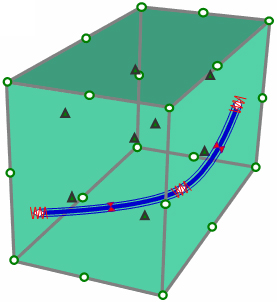Dipl.-Ing. Dr.techn.
RESEARCH
- Integral Bridges
Interest in integral bridges or jointless bridges is increasing and their outstanding performance has gained international attention. Experiences made on integral bridges in the own administration are compared to international literature and to other national findings. The goal is to create an Austrian design guideline with a representative team of experts.
- Concrete Overlays
Due to a permanent increase of traffic loads during the last decades and due to installation of modern vehicle restraint systems older bridges are over utilized without increasing the bearing capacity. Casting a concrete overlay on the existing structure is a state of the art method in order to increase the bearing capacity. The key is to prepare the interface such that no slip will occur between old and new concrete when forces are transferred over the interface. Based on experiments, recommendations haven been worked out with a representative team of experts for the preparation of the old concrete, the composition of the new concrete, casting and curing, the structural design and detailing of the interface.
- 3D Computational Modeling of Reinforced and Prestressed Concrete Structures
BEFE-Concrete has been developed as an extension to the 3D (three-dimensional) finite element program BEFE for analyzing reinforced and prestressed concrete structures. It has the capability to account on the one hand for every single rebar and, on the other hand, allows the engineer to perform the nonlinear analysis with feasible effort. All parameters needed can be taken from the literature (codes, FIB-bulletins).
The concrete mesh can be designed without considering the reinforcement layout. The position and diameter of one-dimensional reinforcement bars / tendons can be retrieved from detailing. The bars are automatically discretized for the element mesh. They are embedded into the parent elements. The contribution of the rebars or tendons to the stiffness matrix is superimposed on the respective parent elements by employing the embedded approach. An embedded approach allowing consideration of slip between the rebar and the parent concrete is presented by introducing slip degrees of freedom to the parent elements.
Slip situations arising
from any kind of prestress (initial pre-tensioned, bonded or unbonded
post-tensioned tendons) can be accounted for by the developed formulation.
Concrete is modeled in terms of plasticity, employing the Ottosen failure
criterion. Several rotating crack models based on the cohesive crack concept
are available for tensile failure. Creep is accounted for by integrating
the entire stress history. A detailed user’s manual for the program
is available as well.
BEFE-Concrete is an extension of an existing computer program, which has the capability to perform a coupled analysis of Boundary Elements and Finite Elements (BEFE), although none of the boundary element options is used in the present work. BEFE was developed by Gernot Beer and his group. The program was designed originally for geotechnical applications, with the new concrete module it has gained the potential to perform analysis in the area of nonlinear soil structure interaction.
embedded rebar allowing slip
(click to enlarge)
